canvas learning organization
At SOL we use the canvas model below to better understand learning in organizations. This model is based on our Change from Within model.
The Canvas Learning Organization originated on the basis of a number of models/theories:
- Peter Senge: Writer of The Fifth Discipline, in which a shared vision, mental models, team learning, personal mastery and systems thinking are the 5 disciplines with which you build a Learning Organization (See A below).
- Peter Senge: To be "Framework for the Learning Organizationin which he provides an integrated vision of learning in organizations (see B below).
- Nigel Paine: He makes it clear that the basis for a Learning Organization is a Learning Culture (see C below).
- Simon Sinek: His vision on leadership (focus on middle management) and his insight that the most important contribution is formed by the insight that everything starts with the formulation of the Why; the reason for existence of the organization / Golden Circle model (see D below).
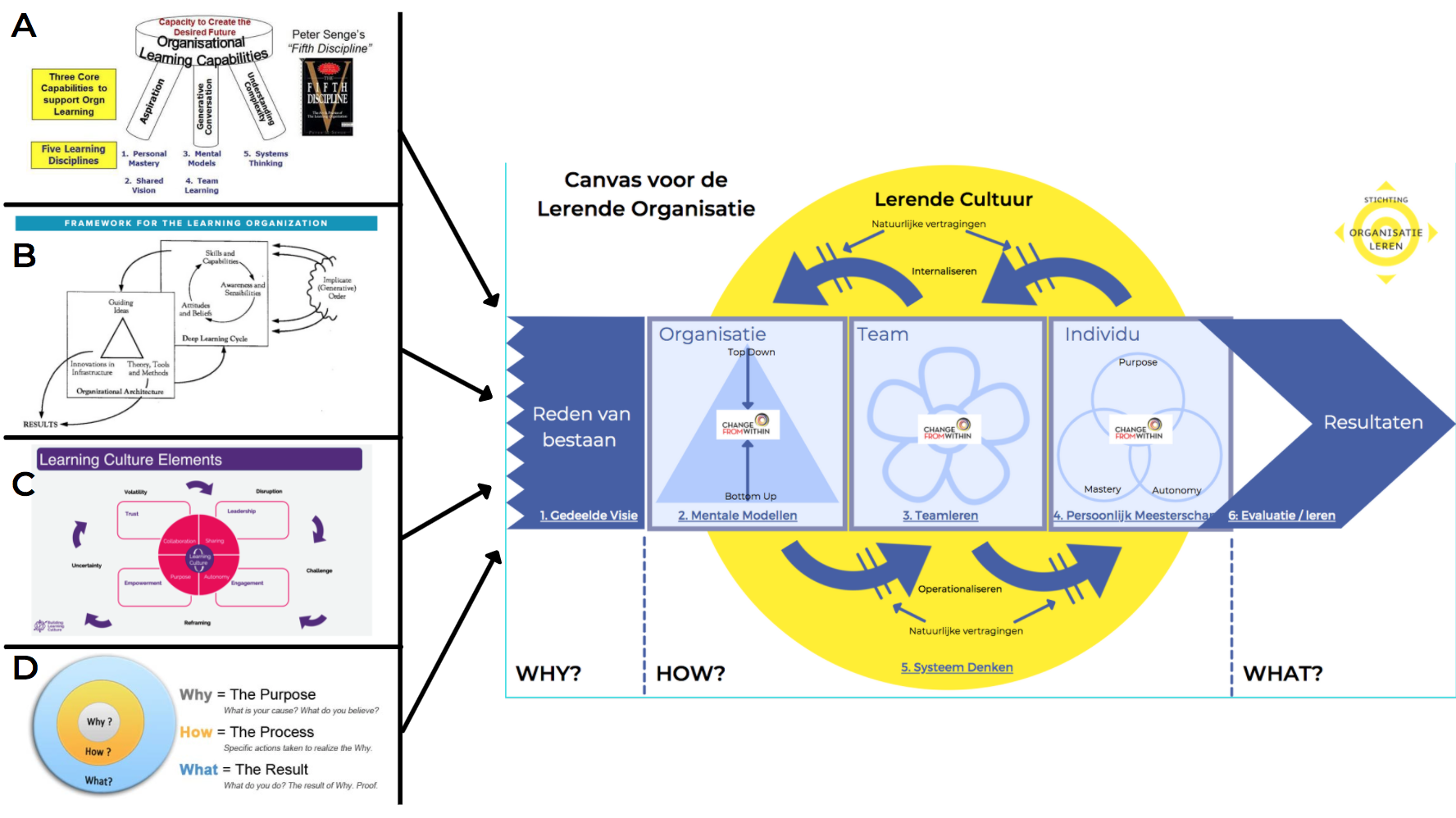
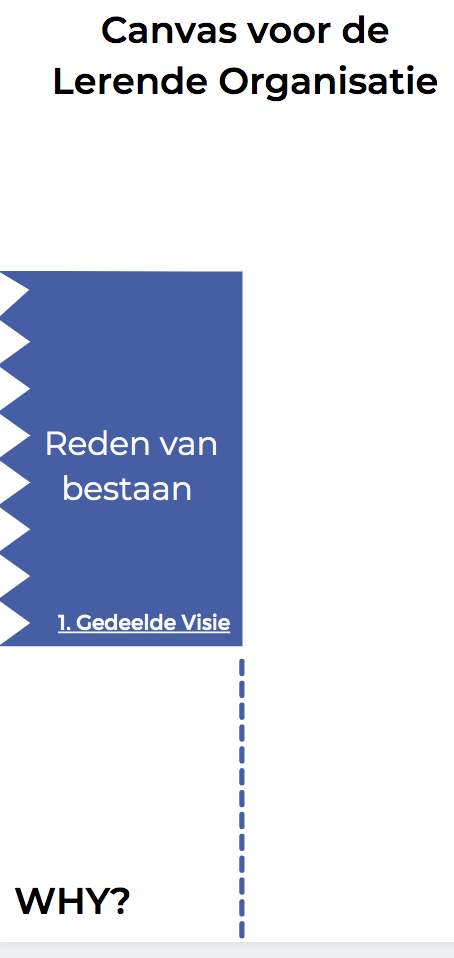
The reason for existence of the organization lies in the value that the organization can add to society.
According to systems scientist Peter Senge (author 5'th Discipline) are five disciplines essential for a learning organization. These disciplines describe how employees continue to develop and how to overcome learning blocks:
- Shared vision: To what extent do employees have the same idea of what the organization is aiming for?
- Mental models: There are often unnamed assumptions in every organization. By sharing these, we learn new perspectives and our own limitations.
- Team learning: tuning and developing a team to achieve the results it really strives for.
- Personal mastery: individual employees must have the drive themselves to create new knowledge and skills to teach;
- Systems thinking: you have to pay attention to the whole, not just the parts.
Step 1: An important step for realizing a learning organization is the creation of a shared vision. According to Senge, a shared vision is essential to building a successful learning organization. A shared vision gives employees energy and focus. Senge believes that you learn best when you try to achieve things that are important to you.
A shared vision is what you and the other members want to create or achieve as part of the organization. A shared vision is not imposed by one or a few people as an organizational mandate. Rather, it is derived from the members of the organization, creating common interests and a sense of shared purpose for all organizational activities.
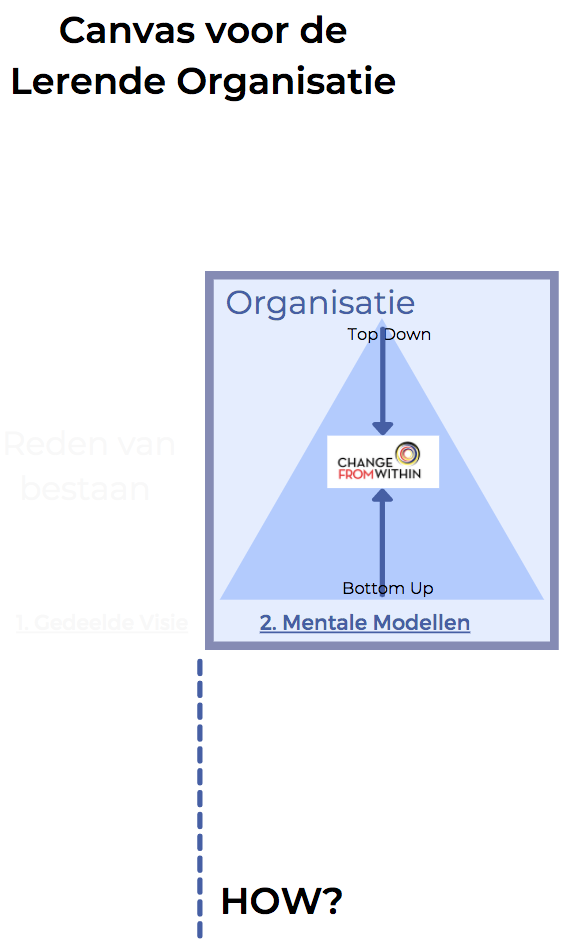
Step 2: The organization is part of society. But from within the organization we also look at the same society with a certain 'glasses' of which we are part.
We do this looking at society from a certain mental model. According to Senge, mental models are conceptual frameworks made up of generalizations and assumptions from which we understand and act in the world.
We often don't even realize that these mental models exist or affect us. Mental models are an important part of Peter Senge's view of a learning organization, as you must master mental models to effectively build a learning organization.
Converting the outside world to the inside world is often done under the responsibility of the operational management. The middle manager therefore plays an essential role in the learning capacity of the organization.
Learning within organizations can be promoted and facilitated, both from above and below. From above by the (top) management (adjusting the organization, promoting autonomy, etc.). Or from below by giving space to learning in the workplace.
The secret of realizing a learning culture is in Change from Within. It does not come from the top, nor from the bottom of the organization. It is it Learning Leadership from the middle management that makes the difference!
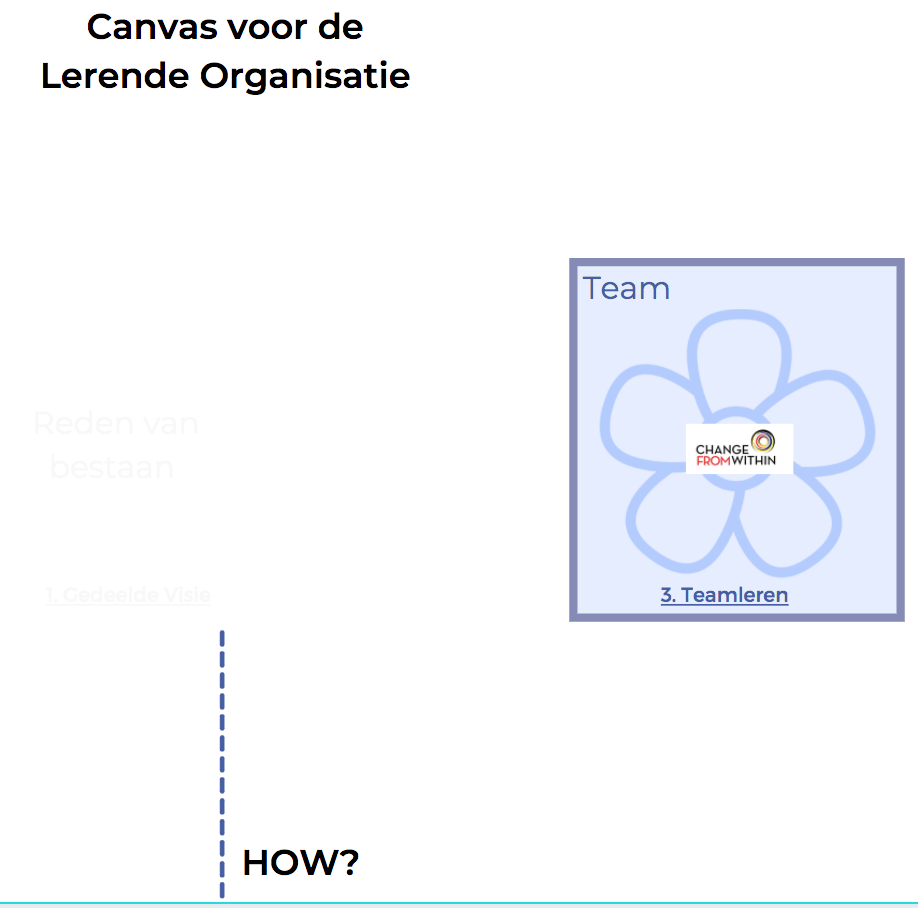
Step 3: “Teams, not individuals, are the fundamental unit of learning in modern organizations. This is where "rubber meets the road"; only if teams can learn can the organization learn.”
According to Peter Senge, team learning a necessary discipline that an organization and its members must develop in order to build an effective learning organization.
With SOL we have good experiences with Learning Practice Teams (started by Evrim Calçavur of SOL Turkey). These Learning Practice Teams are deployed for setting up innovative projects or solving complex problems.
With co-leadership of two people per team, which guarantees continuity and sustainability. We also call this the “Water Lily Model”. Water lilies are difficult to grow in a ditch. But, if one grows and blooms, in a short time the entire ditch is full of blooming water lilies (multiply by dividing!). In this way we develop change from within!
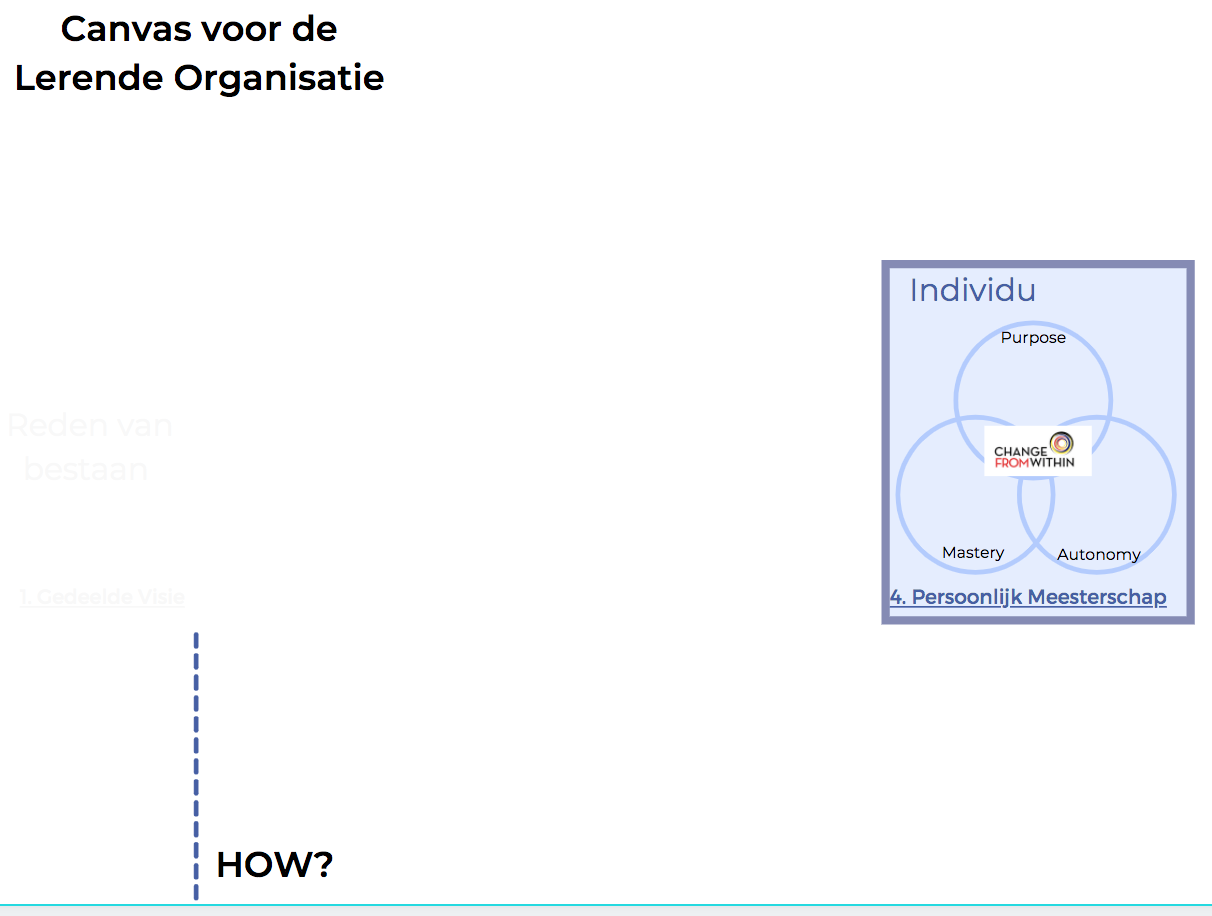
Step 4: Personal mastery forms the basis of all learning within organizations. It is best to respond to the intrinsic desire of every person to learn.
Intrinsic motivation is according to Daniel Pink depending on three factors; purpose, autonomy & mastery. It is important that the work is meaningful (purpose). That there is sufficient control over the execution (autonomy) and that you as an implementer have sufficient knowledge, skills and experience to be able to carry out this (mastery).
The moment these three basic conditions for personal mastery are met, there is plenty of room and motivation for each individual to develop themselves personally and professionally.
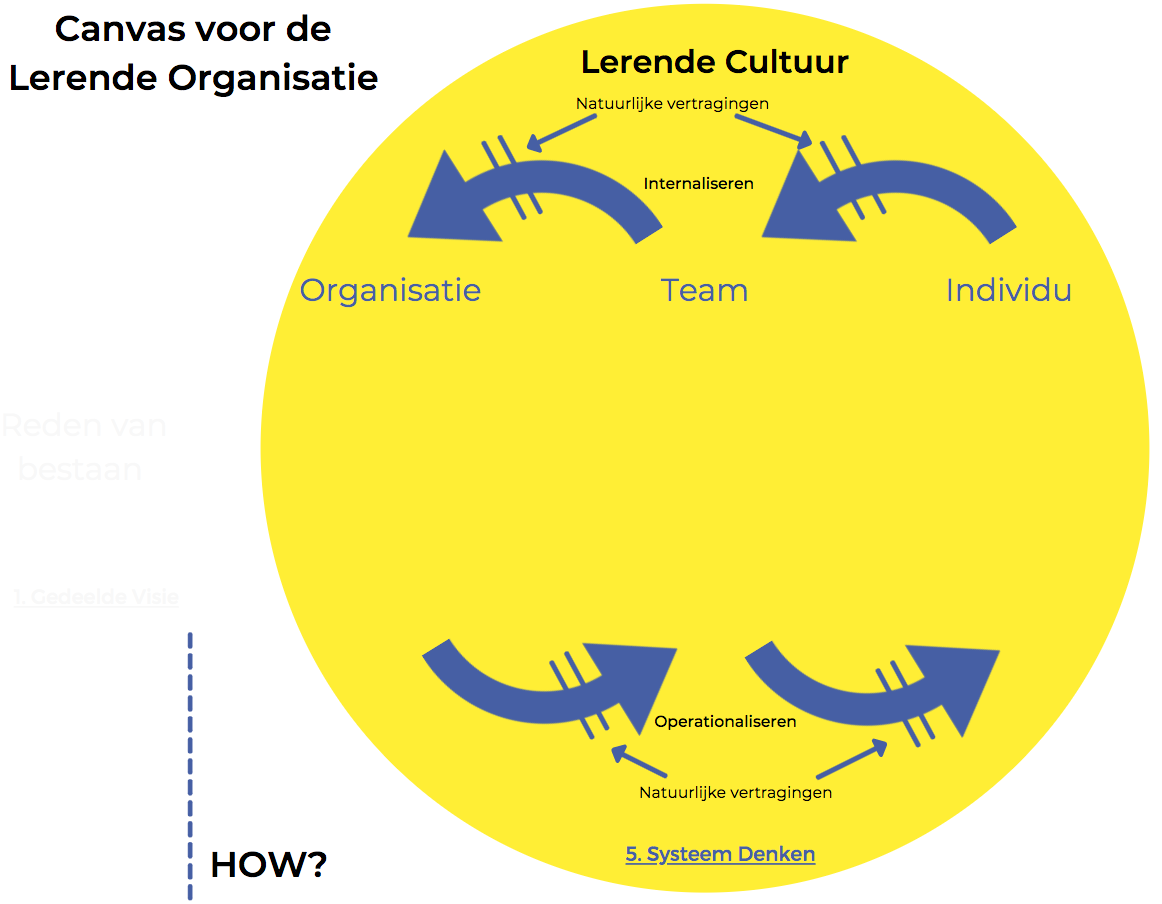
Step 5: The most important of the five disciplines for the creation of a learning organization is system thinking. Looking at the whole, not just the individual parts.
Within organizations there are natural delays associated with the internalization and operationalization of knowledge and skills. For example, it takes time for a new workout to pay off (internalize). Or when, for example, a new assessment method has an impact on an individual level (operationalisation).
The principle of 'change from within' also applies here. These natural delays decrease as the organizational learning culture becomes more mature. If learning processes are faster, this automatically means that natural delays decrease.
A learning culture therefore forms a sustainable basis for a more learning, agile and living organization!
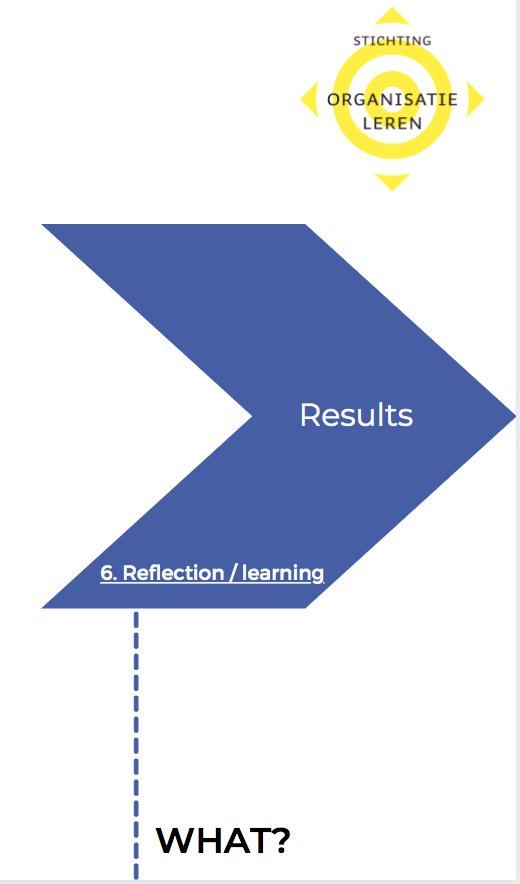
Step 6: The last step brings us back to the beginning: Shared Vision. A continuous reflection on our own functioning:
- Have we achieved what we wanted to achieve?
- In a way that we all stand behind?
- Do the results give cause to adjust the shared vision?
- Or are adjustments in the development process necessary?
The result of this Change from Within methodology is different for every organization. But research by Bersin shows that organizations capable of developing a learning culture are among the 6% best performing organizations worldwide.
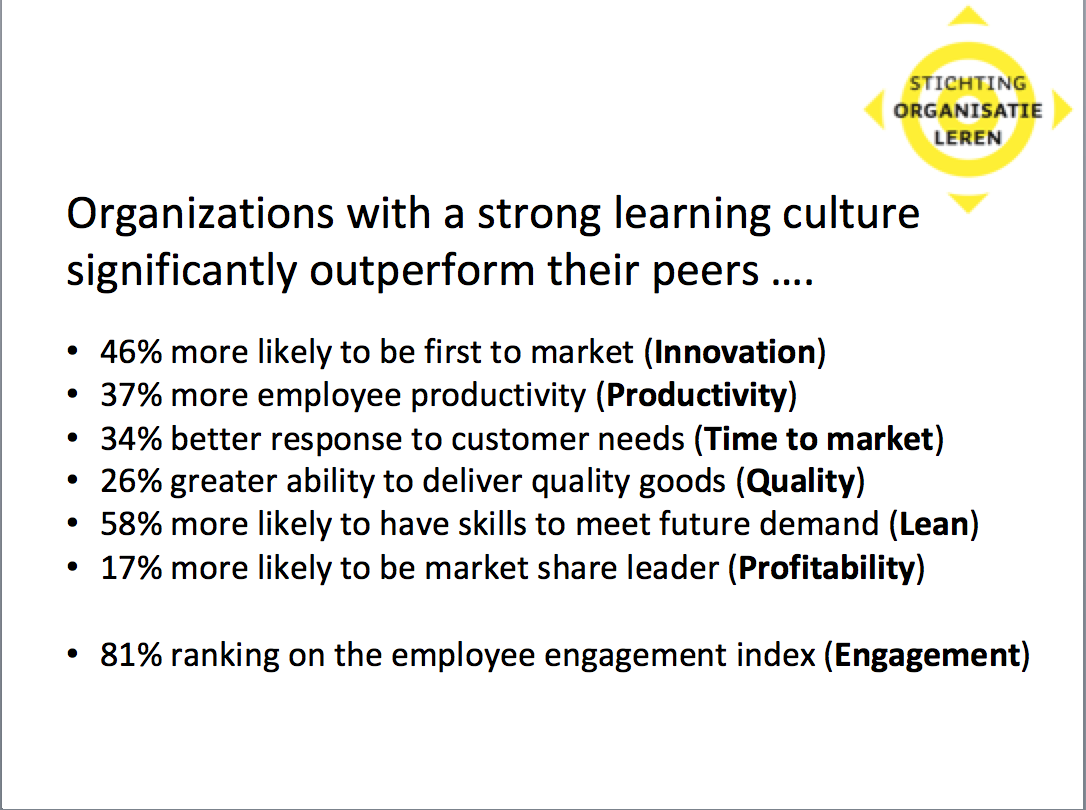
Conclusion: Organizations with a learning culture are more innovative, productive and profitable. But perhaps more importantly, they are also organizations where employees are better prepared for the future and are attractive to work for!
JOIN THE SOL COMMUNITY FOR FREE
Sign up directly and receive x e-paper free in your inbox.
Including the invitation to our cool SOL Community!
